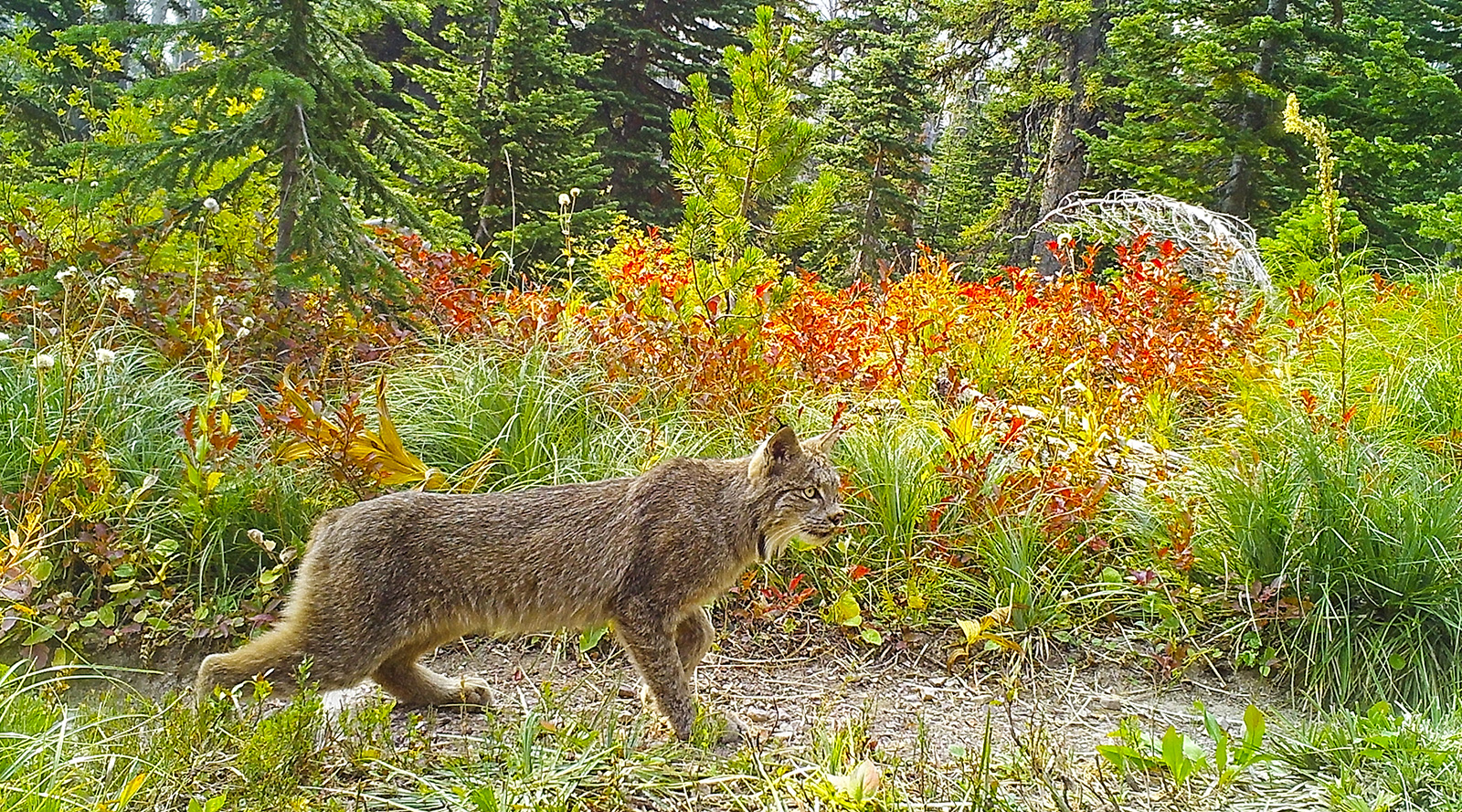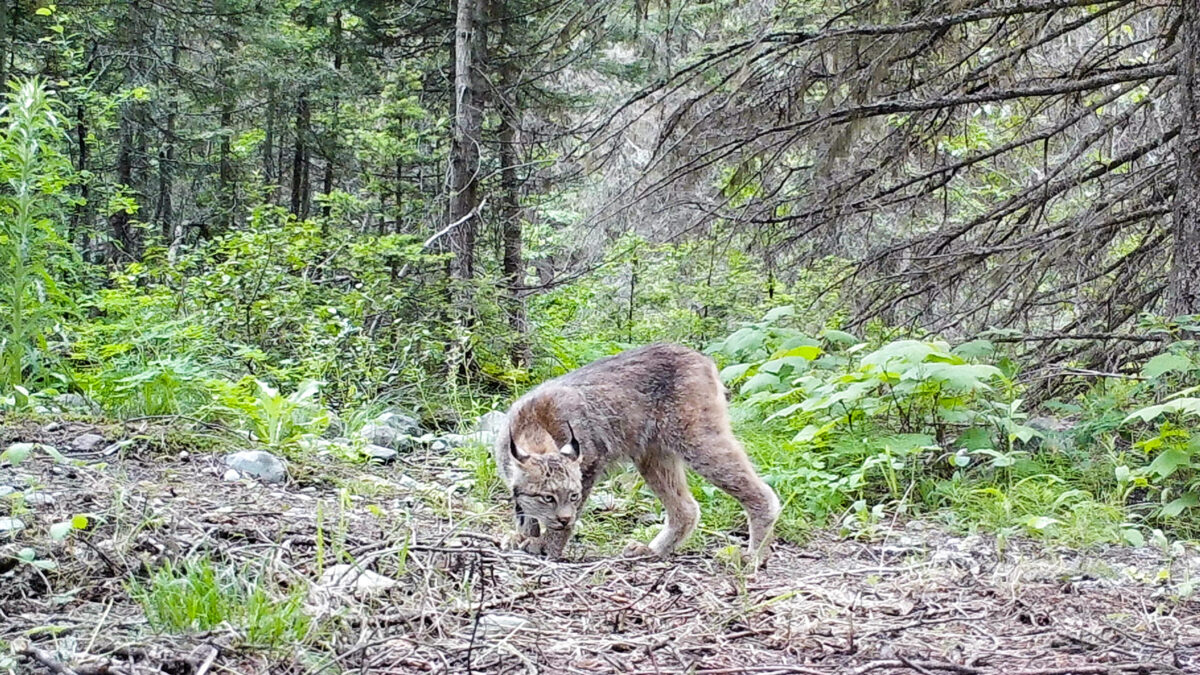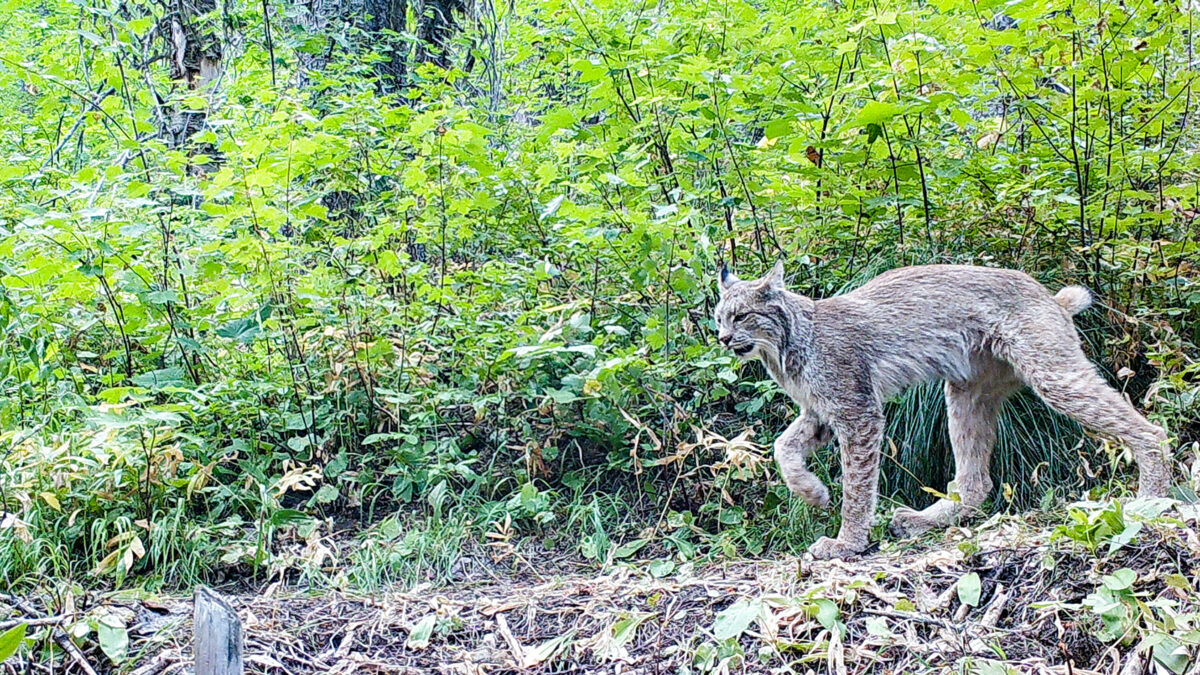The Missing Lynx of Glacier National Park
Scientists recently conducted the first parkwide population survey of Canada lynx in Glacier, filling a critical data gap surrounding the elusive carnivore and pegging Glacier as a potential climate haven
By Tristan Scott
As a wildlife biologist studying rare and elusive carnivores in Glacier National Park, John Waller has spent much of his career trying to gain a better understanding of species that are genetically adapted to avoid human detection. In other words, whether he’s stalking wolverines, tracking grizzly bears or hounding fishers, Waller has grown accustomed to getting skunked in the field.
And yet, due in large part to his patience and tenacity, Waller’s trailblazing work has produced some of the best population estimates about the hardest-to-track critters, including a project he engineered 15 years ago to produce the first DNA-based population study of wolverines in Glacier.
“Ever since I started working here, my approach has been to kind of fill in our knowledge gaps and try to determine what we know and what we don’t know,” Waller said. “Typically, the things we don’t know, we don’t know for a pretty good reason — because they involve a species that’s difficult and expensive to monitor.”
So, when the nonprofit Glacier National Park Conservancy carved out a half-million dollars in funding for a three-year monitoring study of a creature so mysterious that its nickname hints at a phantom — the Canada lynx, also known as the “shadow of the forest” — Waller was the perfect man for the job.
“When the Conservancy offered to step in and fund this project, I knew we had a unique opportunity, and because we routinely get so many Canada lynx sightings every year, I knew we’d probably get quite a few detections,” Waller said.

“Having this breadth of data will help the National Park Service manage wildlife,” said Doug Mitchell, executive director at the Conservancy. “It will allow us to understand the neighboring lynx population we have here in the park and help the park think about what other kinds of critters might be significant in the future.”
It also afforded Waller and a team of researchers the opportunity to survey a species whose habitat is being increasingly threatened by climate change, and for whom, the scientists posited, Glacier could serve as an enduring climate haven situated on the southern tip of lynx’s historic range.
With help from Dan Thornton, a Washington State University (WSU) wildlife ecologist and senior author of the newly published study in the Journal of Wildlife Management, and Alissa Anderson, a recent WSU master’s graduate and first co-author on the study, the team of researchers set up an array of 300 motion-sensitive cameras about a half-mile apart on hiking trails across much of Glacier, including remote backcountry areas. Their analysis spanned the summers of 2018-2021 and revealed that about 52 lynx are distributed across most of the park, including at lower elevations, which the scientists suggested could prove useful as the climate continues to warm.
“The main question regarding the lynx’s survival is climate change,” Thornton said. “They are a cold-adapted species that needs deep snow. In Glacier at least, they have a lot of room to move up in elevation as the climate warms.”
Another important aspect of the study was a more localized effort the scientists undertook to estimate lynx density in specific areas of the park by identifying individuals based off distinctive coat markings.
“Lynx have pretty subtle markings compared to other cats and only on the inside of their front legs,” Anderson, who now works for Montana Fish, Wildlife and Parks, said. “So, we set up cameras on either side of the trail to attempt to get pictures of these markings that we could then use to identify individual cats in an area.”

Despite the difficulties of poor lighting, image blur, vegetation and other factors, the researchers were able to link approximately 75% of the lynx they photographed to specific individuals. They then combined the results of the park-wide occupancy survey with their density analysis to extrapolate an overall population estimate for Glacier of about 1.28 lynx per 100 square kilometers of terrain.
Gina Kerzman, the spokesperson for Glacier National Park, said the study’s findings that Glacier may serve as a climate haven for lynx is a result of the park’s success at protecting its habitat.
“It’s possible the park could be a climate refuge for lynx. The park has adequate habitat for the existing lynx population, but many unknowns exist that could change this significantly,” Kerzman said.
Moving forward, the researchers hope the survey can serve as a baseline population estimate to help their collaborators with the National Park Service keep tabs on the numbers of Canada lynx in Glacier. Thornton is also continuing to use the methods the researchers proved effective in Glacier to determine the size of lynx populations in other areas. He is currently leading a long-term effort to survey populations of Canada lynx in Washington state, one of the most threatened habitats for the cats in the U.S.
“The methodological contribution of this study is really important in the sense that it gives us a better way to get at the number of individual lynx, which is really important for understanding recovery and how a population is doing,” Thornton said. “The U.S. Fish and Wildlife Service has to develop a recovery plan for the cats so the more information you have on the status of the population the better.”
For Waller, the study serves as an example of how the evolving technology of passive monitoring (using motion-sensitive cameras rather than baited live traps or scent lures) can help researchers glean critical information and fill in missing chunks of data.

“Before this, the park had done some lynx-monitoring work in the early 90s as part of a national lynx-detection effort using attractors, like a CD dangling from a string, and some scent lures,” Waller said. “But this study was totally passive, which allowed us to conduct the monitoring during the summer months without attracting grizzly bears.”
Monitoring lynx during the summer months also made it easier to identify individuals based off their distinctive markings because their coats aren’t as dense, Waller said.
To read the full study, titled “Canada lynx occupancy and density in Glacier National Park,” visit the Journals of Wildlife Management online at wildlife.onlinelibrary.wiley.com.